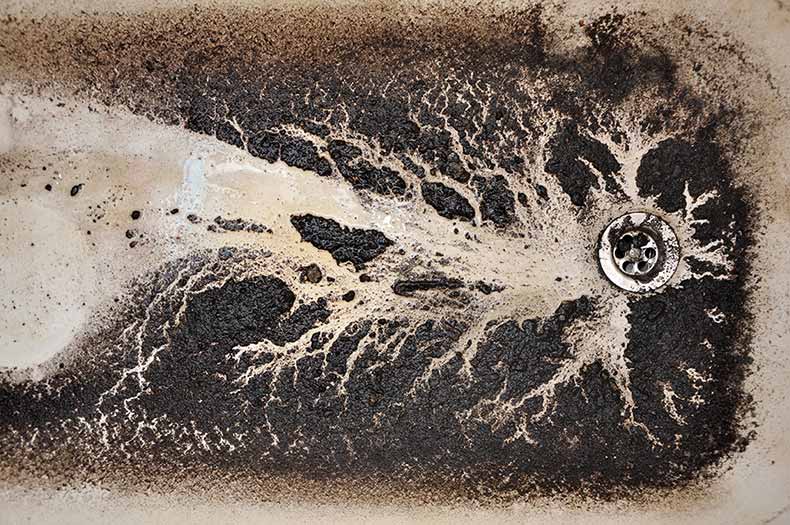We've noticed this article pertaining to Why is Sewage Backing Up Into My Bathtub? below on the internet and thought it made perfect sense to relate it with you on this page.
/cloudfront-us-east-1.images.arcpublishing.com/gray/2576HTYG35OZNCJL6BAPPKX3EQ.jpg)
Sewage back-up in the tub can be a traumatic and unhygienic problem for any type of property owner. Not only is it troublesome, yet it additionally presents severe health risks and indicates underlying problems with the plumbing system. Comprehending why sewage is showing up with the bath tub is critical for taking suitable action to resolve the problem successfully.
Intro to the Problem
Usual Factors for Sewage Backup
Blockages in the Sewer Line
One of one of the most usual causes of sewage back-up is an obstruction in the sewage system line. This can happen because of the accumulation of particles, grease, or foreign items in the pipelines, preventing correct circulation and triggering sewage to support right into your tub.
Tree Origin Invasion
Tree origins seeking wetness and nutrients can infiltrate drain lines via little splits or joints. With time, these roots can expand and increase, triggering substantial damages to the pipelines and resulting in sewage backup problems.
Recognizing the Trouble
When sewer draws back up right into the tub, it's a clear indication of an issue with the water drainage system. The wastewater that should be streaming far from your home is instead discovering its way back right into your home, which can lead to significant damages and health hazards.
Potential Causes
A number of aspects can contribute to sewer back-up in the bathtub. From obstructions in the sewer line to problems with the plumbing framework, determining the origin is crucial for finding a service.
Aging Framework
Older homes may have dated plumbing systems that are a lot more vulnerable to rust, splits, and deterioration. As pipes age, they become much more prone to leakages and clogs, raising the likelihood of sewer backup incidents.
Heavy Rainfall or Flooding
During periods of heavy rainfall or flooding, the drain system might become overloaded with excess water, creating backups and overflows. This can cause sewage supporting right into tubs and various other fixtures inside the home.
Indicators of Sewer Back-up
Foul Odors
Undesirable odors originating from drains or components, particularly in the bathroom, may show sewage backup concerns. These smells are often strong and relentless, signaling a trouble that requires instant attention.
Slow Draining Fixtures
Bath tubs, sinks, and commodes that drain slowly or not in any way could be experiencing sewer back-up. If several fixtures are impacted concurrently, it's most likely that the problem originates from an usual factor, such as the primary drain line.
Gurgling Noises
Strange gurgling or gurgling noises originating from drains when water is running somewhere else in the house are indicative of air caught in the plumbing system. This air buildup can result from sewage back-up and should be examined promptly.
Wellness Risks Associated with Sewer Back-up
Contamination of Water
Sewage backup can pollute the supply of water in your house, presenting a significant health and wellness threat to you and your family. Exposure to contaminated water can result in stomach concerns, skin infections, and other ailments.
Mold and mildew Development
Wetness from sewage back-up can produce perfect problems for mold development in your house. Mold spores can aggravate respiratory system issues and cause allergies in sensitive individuals, making timely clean-up important.
Spread of Disease
Sewer contains unsafe bacteria, viruses, and bloodsuckers that can cause a series of diseases, including hepatitis, cholera, and gastroenteritis. Coming into contact with sewer or contaminated surfaces places you in danger of infection.
Cleaning Up After Sewage Backup
Sanitation Procedures
Extensively decontaminate and sanitize influenced areas after sewer backup to get rid of unsafe bacteria and protect against mold and mildew development. Use suitable cleansing products and safety equipment to ensure secure and efficient cleanup.
Restoration of Influenced Areas
Fix any damages to floor covering, walls, or fixtures brought on by sewage backup. Depending upon the level of the damages, you might require to change carpets, drywall, or other materials to recover your home to its pre-loss problem.
Immediate Actions to Take
Shutting Off Water
In case of sewage back-up, it's essential to switch off the water supply to prevent further contamination and damage. Situate the primary water shutoff valve in your home and closed it off till the concern can be fixed.
Speaking To a Specialist Plumber
Dealing with sewage back-up is not a DIY work. Contact a qualified plumber with experience in handling sewage-related problems to assess the circumstance and carry out essential repair work or cleanups.
Avoiding Contact with Polluted Water
Till the sewer back-up is solved, stay clear of contact with polluted water to stop the spread of microorganisms and microorganisms. Use protective gear if you should remain in the afflicted area and wash your hands thoroughly afterward.
Safety nets
Routine Maintenance of Sewage System Lines
Schedule regular evaluations and maintenance of your drain lines to identify and attend to prospective issues before they rise right into significant issues. This can include cleaning out debris, checking for tree origin invasion, and repairing any damaged pipes.
Mounting Backwater Valves
Take into consideration setting up bayou valves in your plumbing system to stop sewage from receding into your home throughout durations of heavy rainfall or flooding. These valves instantly close when water starts backing up, protecting your residential property from contamination.
Correct Disposal of Household Waste
Avoid flushing anything apart from bathroom tissue and human waste down the toilet to prevent obstructions and blockages in the drain line. Dispose of oil, oil, and other home chemicals effectively to lessen the danger of plumbing issues.
Sewage Coming Up Through the Bathtub?
Understanding the Plumbing System:
To understand why sewage is coming up through your bathtub, it is essential to have a basic understanding of the plumbing system. The plumbing system is a complex network of pipes, valves, fixtures, and drains that work together to provide clean water to your home and remove waste and sewage. The system consists of two parts: the supply system and the drainage system.
The supply system brings clean water to your home, while the drainage system removes wastewater from your sinks, toilets, showers, and bathtubs. The drainage system is connected to the main sewer line, which carries the wastewater to the municipal sewage treatment plant or septic tank.
Causes of Sewage Coming Up Through the Bathtub:
Sewage coming up through the bathtub can be caused by various factors. Some of the most common causes are:
Clogged Drain Pipes:
One of the most common reasons for sewage coming up through the bathtub is a clogged drain pipe. Over time, debris, hair, soap scum, and other foreign objects can accumulate in the drain pipes, leading to a blockage. This can cause the wastewater to back up and come out of the bathtub.
Main Sewer Line Blockage:
Another reason for sewage coming up through the bathtub is a blockage in the main sewer line. The main sewer line connects your home’s drainage system to the municipal sewer system. If the main sewer line gets clogged due to tree roots, grease buildup, or other obstructions, it can cause sewage to back up into your home’s plumbing fixtures, including the bathtub.
Sewage Backup:
Sewage backup is another common cause of sewage coming up through the bathtub. Sewage backup occurs when there is a problem with the municipal sewer system, such as heavy rainfall, flooding, or a malfunctioning pump. When this happens, sewage can flow back into your home’s drainage system and cause sewage backup in your plumbing fixtures, including the bathtub.
Broken or Damaged Pipes:
Finally, broken or damaged pipes can also cause sewage to come up through the bathtub. Over time, pipes can deteriorate due to age, corrosion, or external factors such as shifting soil. When pipes break or crack, wastewater can leak out and cause sewage backup in your plumbing fixtures.
Signs of Sewage Coming Up Through the Bathtub:
Some of the signs that sewage is coming up through your bathtub include:
Foul odor: If you notice a strong, unpleasant odor coming from your bathtub drain, it could be a sign of sewage backup. The smell is caused by the buildup of organic waste in the pipes. Slow drainage: If your bathtub drains slowly or not at all, it could be a sign of a clogged drain pipe or a more severe problem with the main sewer line. Gurgling sounds: If you hear gurgling sounds coming from your bathtub drain or other plumbing fixtures, it could indicate that air is trapped in the pipes due to a blockage. Prevention Measures:
The best way to prevent sewage from coming up through the bathtub is to take preventative measures. Here are some practical tips:
Regular Drain Cleaning:
Regular drain cleaning can help prevent clogs and keep your pipes in good condition. You can use a plunger, drain snake, or enzymatic drain cleaner to remove any buildup of hair, soap scum, or other debris in your bathtub drain.
Proper Waste Disposal:
Improper waste disposal can also contribute to sewage backup. Avoid flushing non-biodegradable items, such as paper towels, feminine hygiene products, or wipes down the toilet. Also, be mindful of what you pour down the drain, such as grease, oil, or coffee grounds, as they can cause clogs.
Professional Plumbing Maintenance:
Regular plumbing maintenance can help prevent plumbing emergencies, such as sewage backup. A professional plumber can inspect your pipes, identify any potential issues, and perform preventative measures, such as hydro jetting, to clean your pipes.
Hydro Jetting:
Hydro jetting is a powerful method that uses high-pressure water to clean the pipes thoroughly. It can remove even the most stubborn clogs and prevent future blockages.

We were shown that report on Why is Sewage Backing Up Into My Bathtub? through someone on our other web page. Are you aware of anybody else who is looking into the niche? Feel free to share it. Kudos for being here. Revisit us soon.
Call Today
 Taran Noah Smith Then & Now!
Taran Noah Smith Then & Now! Andrea Barber Then & Now!
Andrea Barber Then & Now! Ashley Johnson Then & Now!
Ashley Johnson Then & Now! Elisabeth Shue Then & Now!
Elisabeth Shue Then & Now! Meadow Walker Then & Now!
Meadow Walker Then & Now!